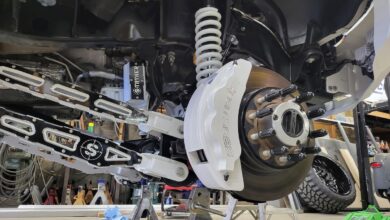IIHS Researchers Find Little Benefit from Knee Airbags
 Airbags are essential, lifesaving devices that have prevented tens of thousands of deaths. More airbags, one might assume, would provide even greater protection.
Airbags are essential, lifesaving devices that have prevented tens of thousands of deaths. More airbags, one might assume, would provide even greater protection.
That isn’t always the case, however, a recent Insurance Institute for Highway Safety (IIHS) study shows.
One increasingly common type of airbag-the knee airbag-“has a negligible effect on injury risk and, in fact, may even increase it in some cases, ” the organization stated.
Knee airbags usually deploy from the lower dashboard and are intended to distribute impact forces to reduce leg injuries, according to a press release. They may also help reduce forces on an occupant’s chest and abdomen by controlling lower body movement.
To find out if knee airbags improve safety, IIHS researchers examined both crash test data and information from real-world crash reports.
For the first part, they looked at injury measures from more than 400 frontal crash tests conducted as part of the IIHS vehicle ratings program to see if injuries were less likely when vehicles were equipped with knee airbags, the release noted.
To look at real-world outcomes, they compiled crash reports from 14 states and compared injury risk in vehicles with knee airbags with risk in vehicles without knee airbags.
Knee airbags had only a small effect on injury measures recorded by dummies in IIHS driver-side small overlap front and moderate overlap front crash tests, according to the organization. In the small overlap test, knee airbags were associated with increased injury risk for lower leg injuries and right femur injuries, though head injury risk was slightly reduced.
The airbags had no effect on injury measures in the moderate overlap test.
In the analysis of real-world crashes, knee airbags reduced overall injury risk by half a percentage point, from 7.9% to 7.4%, but the result wasn’t statistically significant, according to IIHS.
“There are many different design strategies for protecting against the kind of leg and foot injuries that knee airbags are meant to address,” says Becky Mueller, an IIHS senior research engineer and co-author of the paper. “Other options may be just as, if not more, effective.”
One reason some manufacturers have been installing knee airbags is to help vehicles pass federally mandated tests with unbelted dummies, the organization stated, noting that it’s possible that knee airbags would help unbelted occupants in real-world crashes.
The IIHS study didn’t look specifically at crashes in which people weren’t using seat belts, and dummies are always belted in IIHS vehicle ratings tests.



